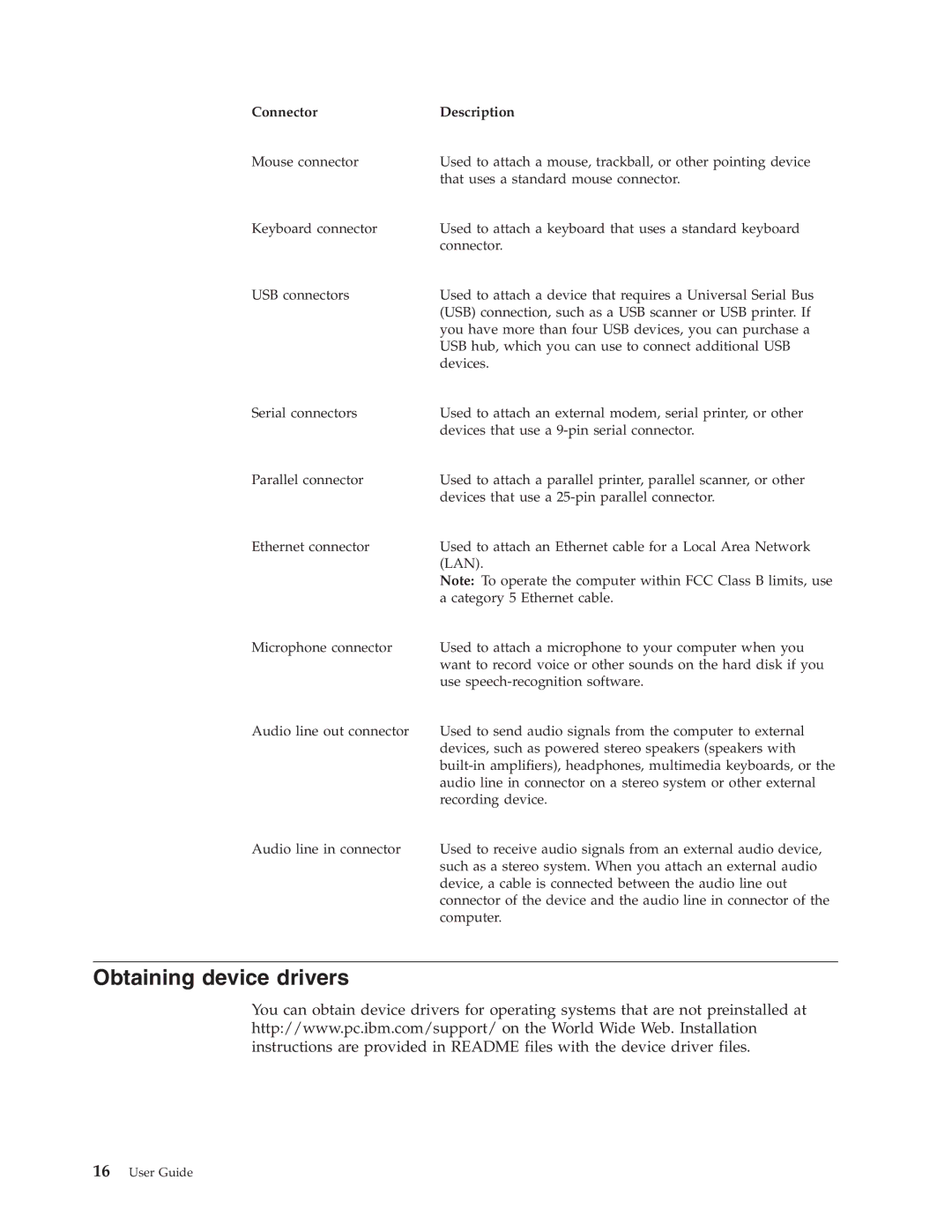Connector | Description |
Mouse connector | Used to attach a mouse, trackball, or other pointing device |
| that uses a standard mouse connector. |
Keyboard connector | Used to attach a keyboard that uses a standard keyboard |
| connector. |
USB connectors | Used to attach a device that requires a Universal Serial Bus |
| (USB) connection, such as a USB scanner or USB printer. If |
| you have more than four USB devices, you can purchase a |
| USB hub, which you can use to connect additional USB |
| devices. |
Serial connectors | Used to attach an external modem, serial printer, or other |
| devices that use a |
Parallel connector | Used to attach a parallel printer, parallel scanner, or other |
| devices that use a |
Ethernet connector | Used to attach an Ethernet cable for a Local Area Network |
| (LAN). |
| Note: To operate the computer within FCC Class B limits, use |
| a category 5 Ethernet cable. |
Microphone connector | Used to attach a microphone to your computer when you |
| want to record voice or other sounds on the hard disk if you |
| use |
Audio line out connector | Used to send audio signals from the computer to external |
| devices, such as powered stereo speakers (speakers with |
| |
| audio line in connector on a stereo system or other external |
| recording device. |
Audio line in connector | Used to receive audio signals from an external audio device, |
| such as a stereo system. When you attach an external audio |
| device, a cable is connected between the audio line out |
| connector of the device and the audio line in connector of the |
| computer. |
Obtaining device drivers
You can obtain device drivers for operating systems that are not preinstalled at http://www.pc.ibm.com/support/ on the World Wide Web. Installation instructions are provided in README files with the device driver files.
